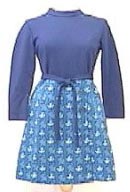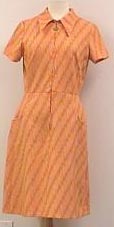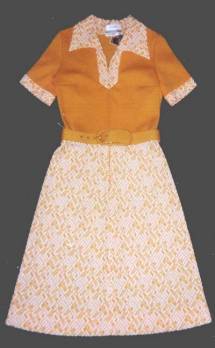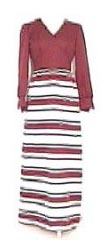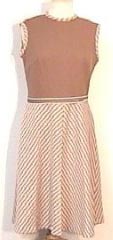The early seventies had three
outlandish trends: clunky platform shoes, long dresses and hot pants.
They were more sixties than seventies in attitude. pants were
the successor to the miniskirt, succeeding in showing more leg, more cheek
and more attitude than had been previously displayed. About
1973, the sixties' freakiness faded out and the real seventies style emerged.
It can be best described as " conservatisms with a choice." For a
while, conservative browns and beiges were popular. Women,
moving in greater numbers into professional jobs, needed suits and
conservative dresses , and thus, the dress-for-success look appeared. It was
the decade of the pants, which showed more variation in just one season than
the whole fifties. Sportswear was introduced into fashion main
stream; women worn joggings when they were not jogging and tennis outfits
when they were not playing tennis. Health and exercise became a way of
life and a way of dressing.
Colour symbolism: Yellow
is a warm color that, like red, has conflicting symbolism. On the one hand
it denotes happiness and joy, but on the other hand it's the color of
cowardice and deceit. Yellow can be perky.
